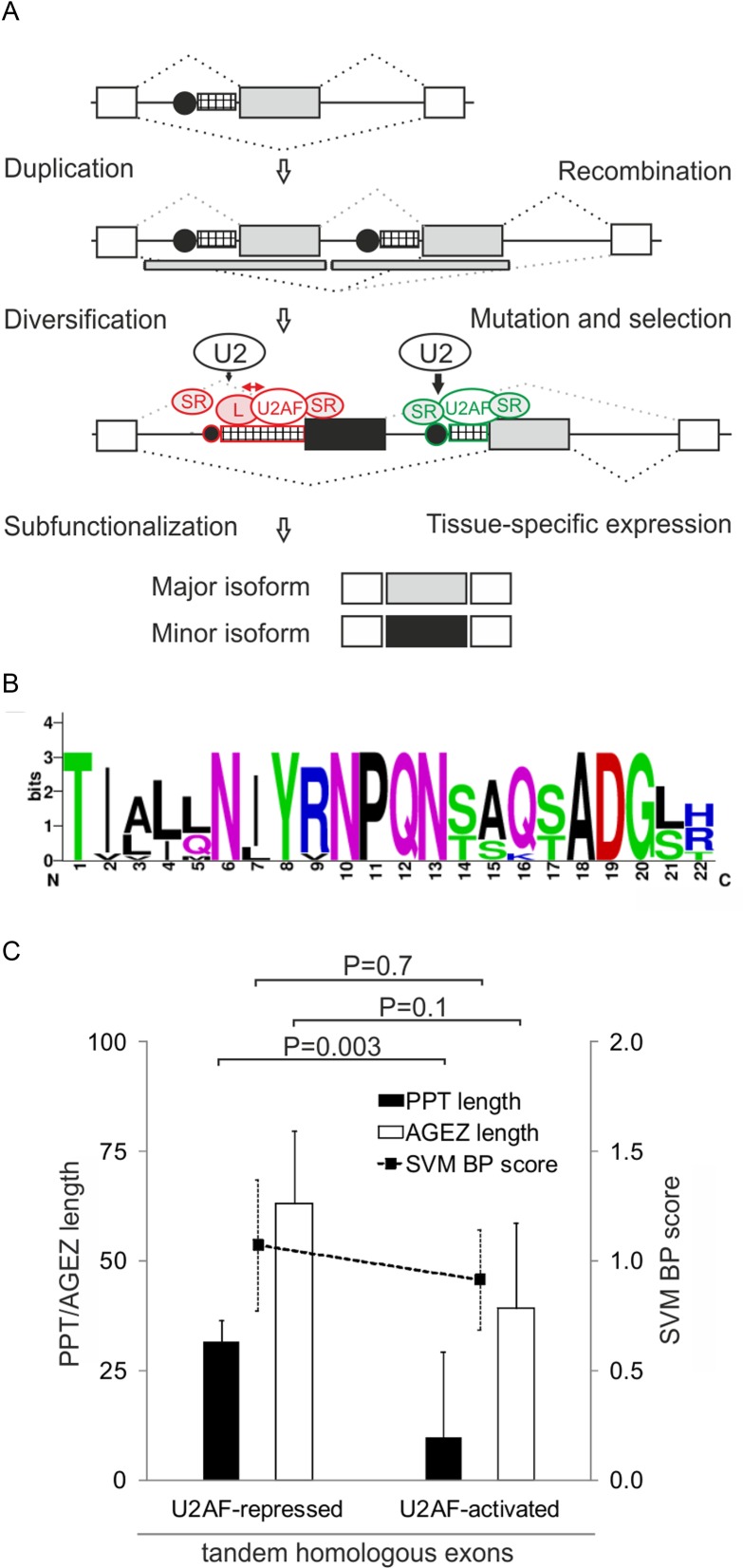Figure 5.
A role for BP/PPT interactions in subfunctionalization of tandem homologous exons. (A) BP/PPT ligands as repressors of duplicated exons. For BP/PPT symbols, see legend to Figure 1A. Ancestral and replica exons are denoted by gray boxes; flanking exons by white boxes; duplicated DNA segments by gray rectangles below; a repressed exon homolog by a black box; splicing by dotted lines. Exon-inhibiting and -stimulating motifs or splicing factors are shown in red and green, respectively. Red arrow signifies competition between U2AF and other PPT ligands (L), which may also bind U2 snRNP components, thus inhibiting U2 binding to the BP (black vertical arrows). (B) Pictogram representation of protein sequences encoded by exons Ab and 3 from 12 species, ranging from D. melanogaster to H. sapiens. Exon positions are numbered at the bottom. (C) Average PPT/AGEZ length and SVM BP scores of U2AF-responsive tandem exon homologs. Two-tailed P-values (t-test) are shown at the top.

